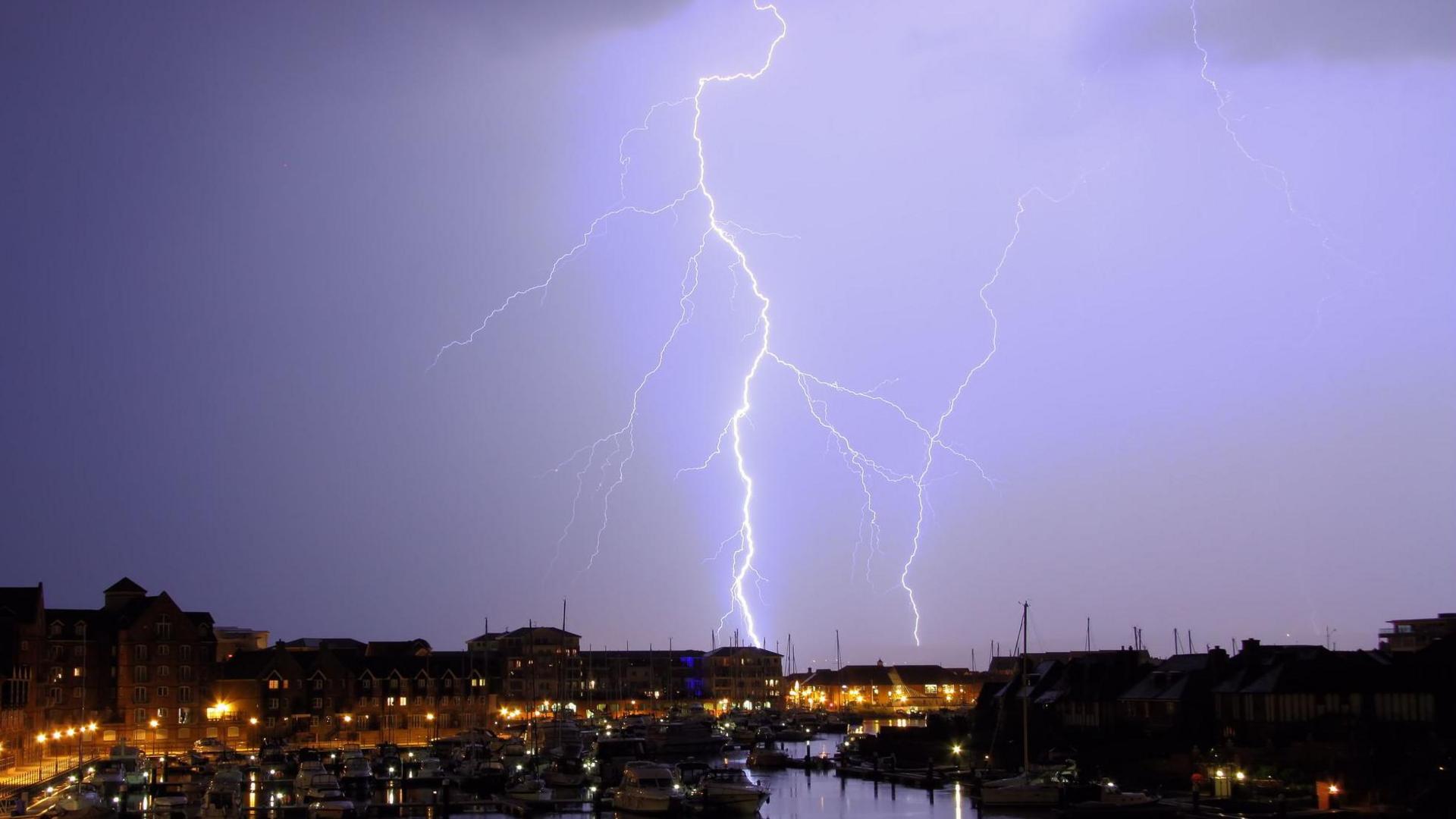Thunderstorm warning for many parts of UK today

- Published
More stormy stories
- Published26 July 2019
- Published15 June 2023
- Published13 June 2023
Rain, rain go away is what many of us may end up saying today, as a warning for thunderstorms and heavy showers is in place.
The weather warning covers much of England, east Wales and southern Scotland.
The Met Office says the most intense downpours will see lightning and gusty winds.
It said there was a chance of flooding, adding that "frequent lightning strikes and hail will be additional hazards" in southern and central England.
What are the weather warnings and what do they mean?
A yellow warning urging people to "be aware", came into force from 04:00 BST on Sunday, covering large parts of southern England, the Midlands, the north of England and southern Scotland.
Another yellow warning replaces this running from midnight Sunday until 23:59 on Monday.
The Met Office says that "while many places will miss them, thunderstorms may cause flooding and disruption".
It added the storms could bring 60-80mm of rain in an hour in one or two places, with frequent lightning strikes and hail.
Rain and hail are expected around the UK
Despite the warning, there are set to be some sunny spells. It's also been feeling especially hot and humid in south-east England.
麻豆社 Weather's Simon King wrote: "Pinpointing exact locations of these showers is quite tricky, and it would be worth staying up-to-date with the latest forecast as it may change."
Where do thunderstorms come from?
Thunderstorms start inside a cloud where bits of ice move up and down and bump into each other. This builds up an electric charge.
If the charge builds up enough it can suddenly flow as a massive electrical current between the cloud and the ground, or between clouds. We see this as a really big spark - or what we call lightning.
When lightning happens, it heats the air to around 10,000掳C.
The air heats up so quickly that it suddenly expands creating a shock wave, a huge vibration in the air, that we hear as thunder.
More wet weather stories
- Published15 October 2018
- Published29 August
- Published31 August 2023
